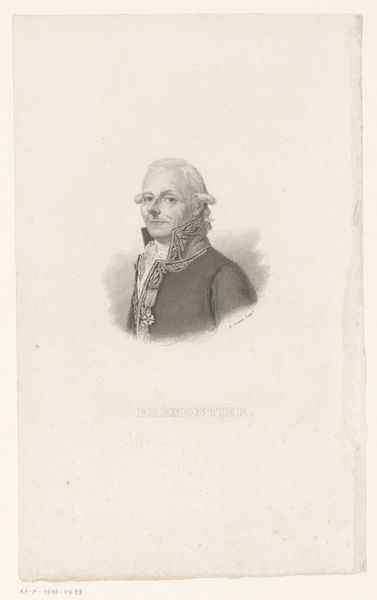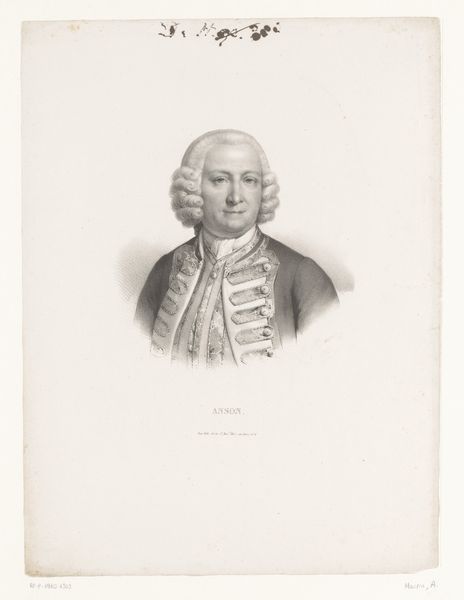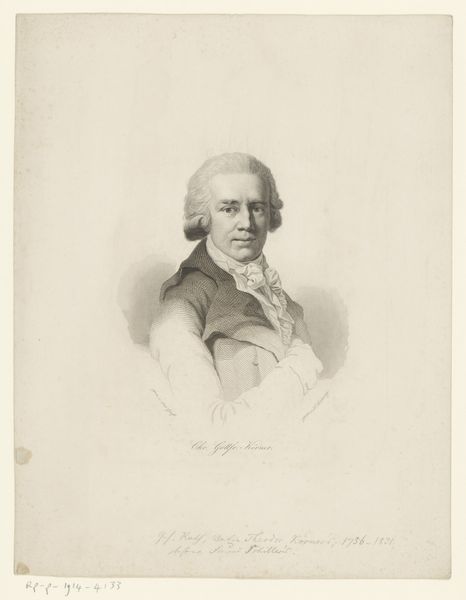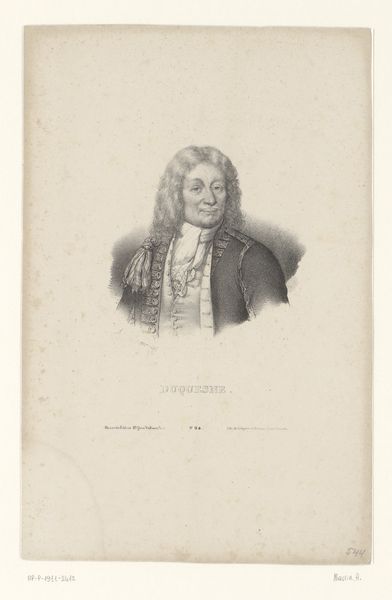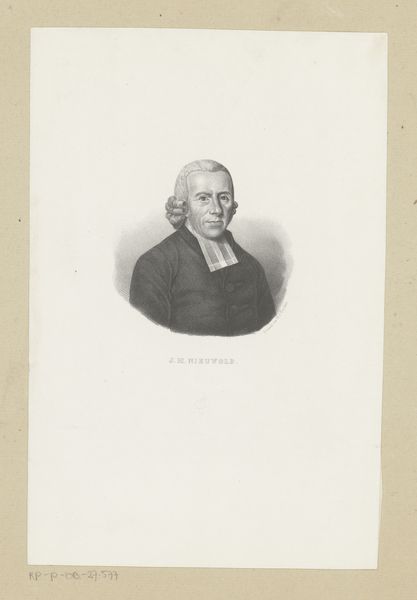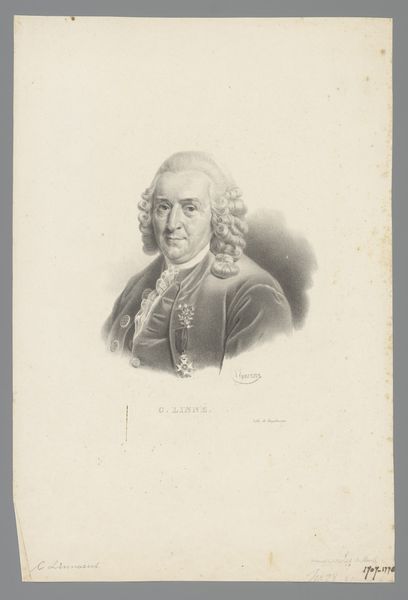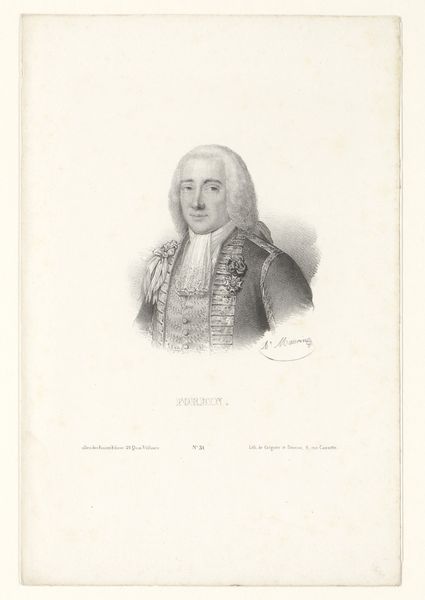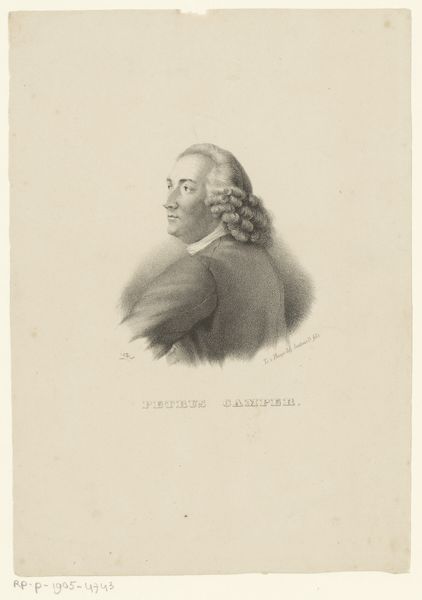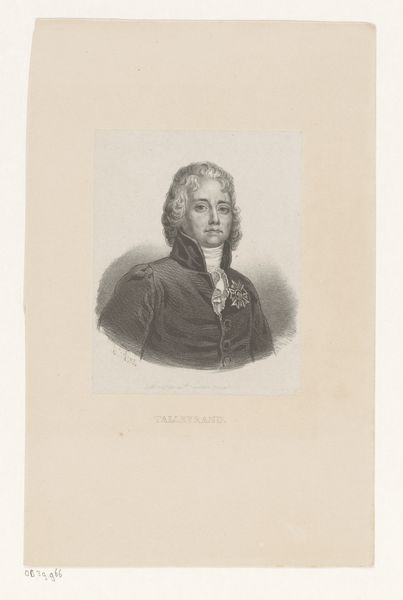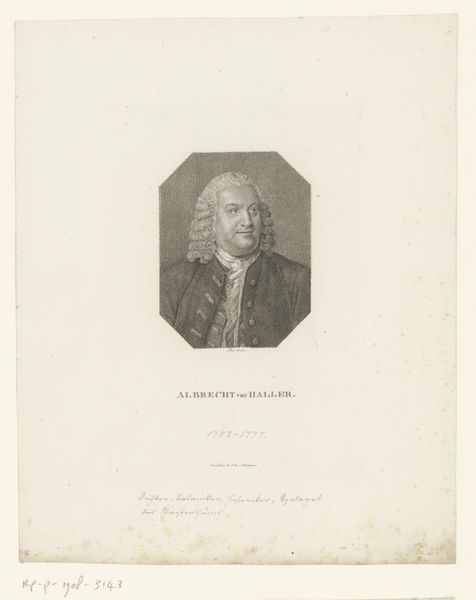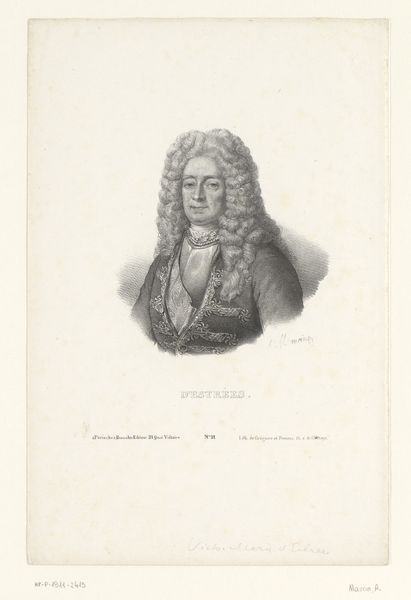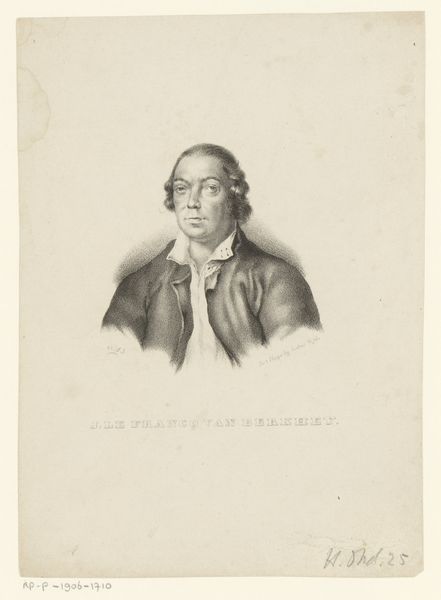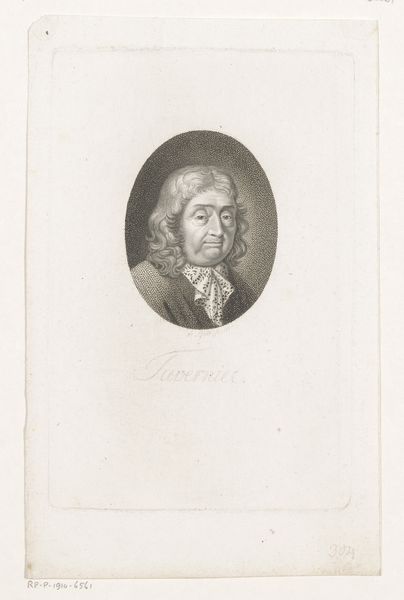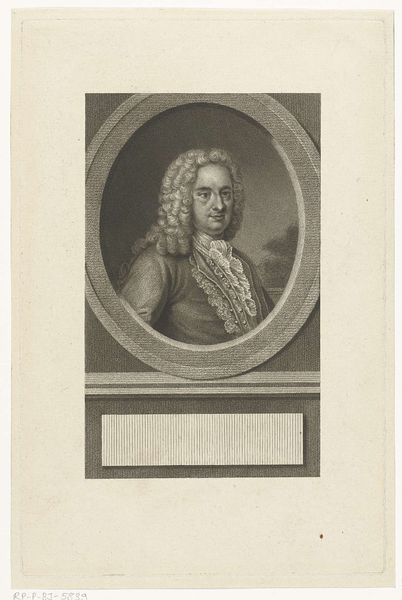
print, engraving
#
portrait
#
pencil drawn
# print
#
pencil sketch
#
old engraving style
#
pencil drawing
#
pencil work
#
engraving
#
realism
Dimensions: height 227 mm, width 160 mm
Copyright: Rijks Museum: Open Domain
Curator: Here we have "Portret van Nikolaas Laurens Burman," a print, specifically an engraving, created sometime between 1830 and 1845, and held here at the Rijksmuseum. Editor: The first thing that hits me is the wig. I mean, what a statement! It’s all cascading curls and speaks to an era of… well, of wig-wearing, obviously, but also formality. Curator: The wig, and the subject's attire, is representative of status, of course. These visual cues signal education and membership within a certain societal echelon. Think of it as visual coding for the time. It says, “I belong." Editor: It's interesting that even in something like an engraved print, the artist manages to capture a certain personality. This isn’t just any powdered dude. There’s a sharpness in his eyes, an almost skeptical curl to his lips. Curator: Precisely. The artist has taken cues, visual elements, of power and presented Burman with an inquisitive rather than authoritative gaze, humanizing a symbol that could have otherwise become two-dimensional. Editor: And it's more intimate somehow, being a print. You can imagine the artist, N.M. Schild, working so precisely, line by line. The level of detail… It makes me feel like I am witnessing a private, almost secret, moment. Curator: Engravings, even portraits like this, offered a way to disseminate information and images widely. Printmaking was how visual culture moved and connected individuals across vast distances. Each line would have communicated and preserved much. Editor: So, more than just an aesthetic artifact; a critical tool for knowledge-sharing, relationship-building, perhaps? It still leaves me wondering about the sitter's particular "look." It challenges simple status. Curator: Portraits were often carefully curated displays, but hints always slip through. The smallest shifts in expression, composition… they offer pathways to individual character that exist beyond symbolic representation. Editor: It's funny how a seemingly straightforward image can be so multifaceted once you really look. Thanks for lending your cultural archeological skills, this has added so much to this two-dimensional form! Curator: And thank you for seeing the living, breathing character beyond the symbolic framework. Art opens us up to experience our shared histories, and perhaps more crucially, the humanity of one another across time.
Comments
No comments
Be the first to comment and join the conversation on the ultimate creative platform.
